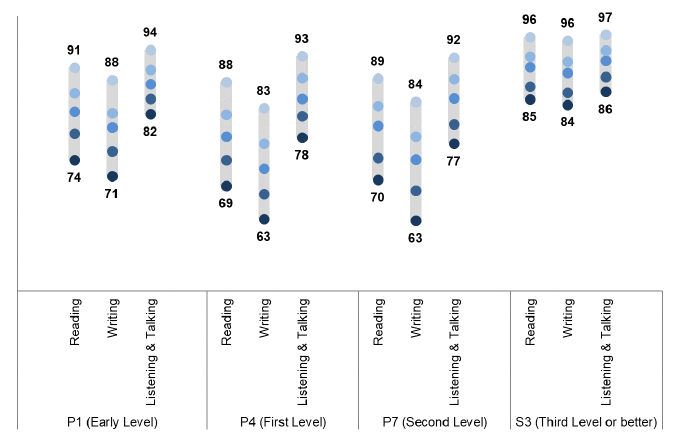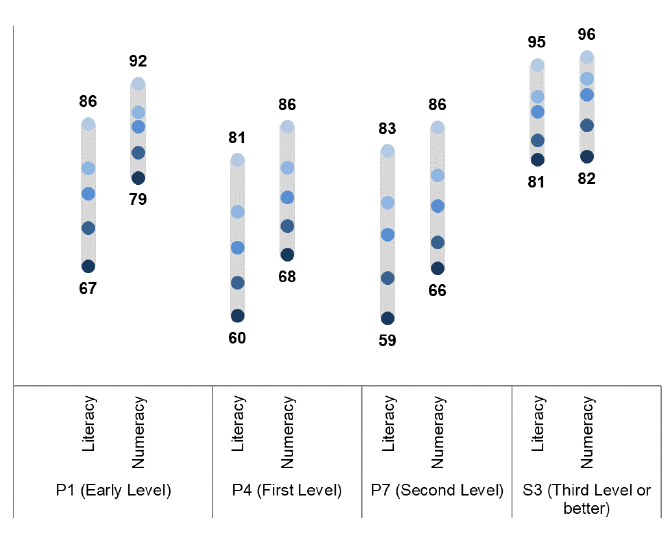Achievement of Curriculum for Excellence (CfE) Levels 2017-18
This contains the results of the achievement of curriculum for excellence (CFE) levels 2017/2018.
This document is part of a collection
Chapter 3: Achievement of CfE levels by SIMD
NOTE: The statistics in this report have been superseded. This mainly affects Chapters 3 and 4.5. Revised figures can be found in the Achievement of Curriculum for Excellence (CfE) Levels 2018/19 publication which can be found here: https://www.gov.scot/publications/achievementcurriculum- excellence-cfe-levels-2018-19/.
Further information on the revisions can be found in chapter 9.4 of the 2018/19 publication.
- Pupils from the least deprived areas performed better than pupils from the most deprived areas at all stages.
- Within primary schools, the largest gap in performance was at P7 in writing (22 percentage points); with the smallest gap at P1 in listening and talking (12 percentage points).
- At S3, Third Level or better, the largest gap was in numeracy performance at 14 percentage points, with the smallest for listening and talking at 10 percentage points.
- Across all stages, the percentage of pupils achieving the expected CfE level increased as the level of deprivation decreased.
Chart 3.1 shows that the smallest performance gaps were reported for S3 pupils achieving Third Level or better; the gap between least and most deprived pupils was between 10 and 12 percentage points for reading, writing and listening and talking.
At the primary stages, the largest attainment gap in reading was at P4 at 19 percentage points. In writing and listening and talking this was P7 with 22 and 16 percentage points respectively. The smallest gap was for each primary stage was in listening and talking with P1 at 12, P4 at 15 and P7 at 16 percentage points.
Chart 3.1: Percentage of pupils achieving expected CfE levels, by SIMD[2], for reading, writing and listening and talking 2017/18

Chart 3.2: Percentage of pupils achieving expected CfE levels, by SIMD[3], for literacy and numeracy, 2017/18

Chart 3.2 shows literacy and numeracy attainment by SIMD quintiles. Attainment in literacy was based on the percentage of pupils achieving the relevant CfE level in all three of the literacy organisers: reading, writing, listening and talking.
At all stages, a greater proportion of pupils achieved the relevant level for their stage in numeracy than literacy (overall), irrespective of SIMD quintile. However, this is not the case for the three literacy organisers individually: performance tends to be higher in listening and talking than in numeracy, whereas writing tends to be lower.
The size of the performance gap between Primary pupils from the least and most deprived areas ranged from 13 percentage points (P1, numeracy) to 23 percentage points (P7, literacy).
Contact
Email: school.stats@gov.scot
There is a problem
Thanks for your feedback